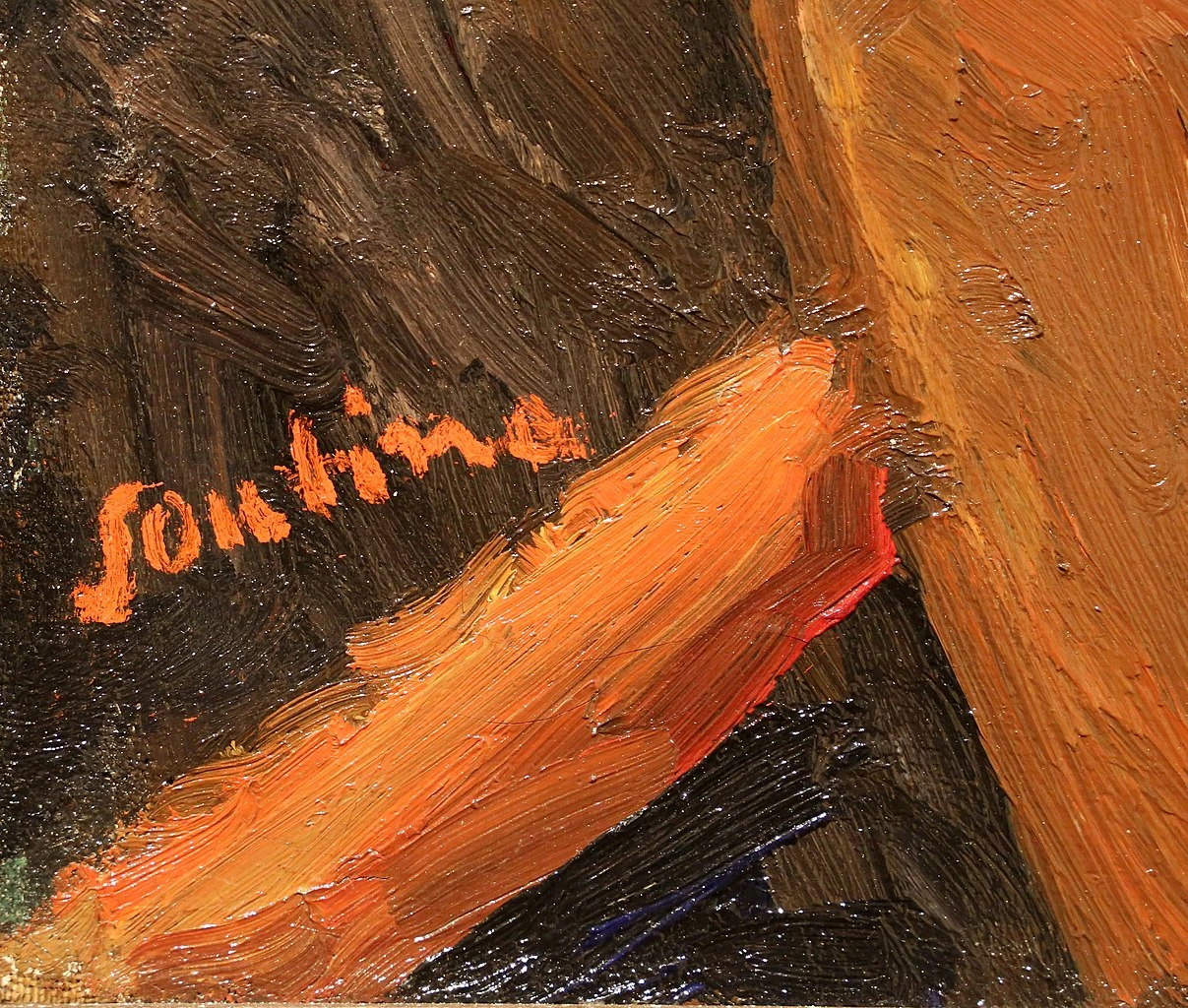Chaim Soutine
(1893 – August 9, 1943)

Photo portrait of Chaim Soutine, 1919 Source Zingerman B.I. Paris school. - M .: Soyuzteatr, 1993 .-- 384 p.
Chaim Soutine was a French Expressionist. Soutine’s formative years were spent in a shtetl in Lithuania. Traditional Jewish religious teachings banned the creation of images of people, but Soutine flouted those rules from an early age. His impoverished parents, Zalman Moisevich and Sarah Sutin, had eleven children. Soutine’s first art instruction was in Vilnius at one of the few academies where Jewish students were taught. Soutine’s paintings at the art academy were melancholy. His teachers praised them and encouraged him to pursue more studies.
Soutine’s ambition was to move to Paris and he did so in 1913. Soutine studied at the Ecole des Beaux-Arts with Fernand Cormon (1845-1924). In Paris, Soutine had his first access to a major international museum: the Louvre, where he studied first-hand Old Masters paintings.
Soutine’s ambition was to move to Paris and he did so in 1913. Soutine studied at the Ecole des Beaux-Arts with Fernand Cormon (1845-1924). In Paris, Soutine had his first access to a major international museum: the Louvre, where he studied first-hand Old Masters paintings.
During this period, Soutine lived in the Montparnasse section of Paris at La Ruche, a building occupied by many artists. Soutine met Amedeo Modigliani (1884-1920) shortly after Soutine arrived in Paris. Modigliani was a friend and cheerleader for Soutine. Through Modigliani, Soutine met the art dealer and poet, Léopold Zbrorowski (1889-1932) who was very supportive of Soutine. Zbrorowski, like Modigliani and Soutine, was Jewish. He was from Poland. Zborowski was Soutine’s first art dealer. When it seemed Paris would be attacked by the Germans during World War I, Zborowski arranged Soutine’s exodus from Paris to safety in the South of France.
Soutine traveled to Venice, Italy, and around the South of France with Modigliani in 1918.
From 1919 through 1922, Soutine lived and worked in Céret, a small artist’s colony in the Pyrenees. Soutine went back to Paris in 1922. He took a studio on Boulevard Saint-Michel in Paris, close to a slaughterhouse, which inspired many of his paintings.

Signature of Chaim Soutine Portrait of Joan Miro, 1935

Chaim soutine, bouquet de rose à la statue de platre, 1918, 02 firma
In 1922, Soutine started being represented by the art dealer and publisher Paul Guillaume (1891-1934) . Guillaume presented Soutine’s work to the important American collector, Dr. Albert C. Barnes (1872-1951). Barnes bought a large group of Soutine’s paintings shortly after seeing them for the first time This made Soutine internationally-famous and gave him some economic stability.
In 1927, Soutine had his first solo exhibit in Paris. At around this time, Soutine met two stalwart patrons who would support him for the rest of his life—Marcellin and Madeleine Castaing (1894-1992) Through the Castaings, Soutine met the artist Jean Cocteau and philosopher Jean-Paul Sartre.
Soutine had his first solo exhibit in the United States in 1935. To evade the Nazis, he traveled around France with Marie-Berthe Aurenche (1906-1960) the ex-wife of artist Max Ernst. In 1943, Soutine went to a hospital in Chinon but was told he had to have emergency ulcer surgery in Paris, about 280 km away. He died the day after his surgery and is buried in the Aurench’s family plot in Montparnasse Cemetery. Pablo Picasso was among the many artists who went to Soutine’s funeral.